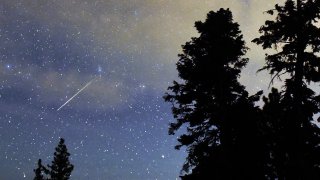
The 2021 Perseid meteor shower will light up the night sky this week.
Wednesday night will be the peak night for shooting stars, which will continue to fall into the early hours Thursday.
This year’s Perseids could be especially dazzling because the moon is just a few days past its new phase, meaning the night sky will be quite dark and the showers particularly easy to observe, according to NASA.
What time is the meteor shower tonight?
Get a weekly recap of the latest San Francisco Bay Area housing news. Sign up for NBC Bay Area’s Housing Deconstructed newsletter.
Billed as the most active meteor shower of the year, the Perseid meteor shower is slated to peak overnight on Wednesday, Aug. 11 through the dawn of Thursday, Aug. 12.
The shooting stars will begin to appear starting at 11 p.m. local time Wednesday and continue with increasing frequency as the night progresses, slowing down at about 3 a.m. Thursday. During its peak, you might spot more than 40 Perseids an hour.
Where is the best place to see the Perseid meteor shower?
U.S. & World
Stargazers in the Northern Hemisphere will have a better chance of seeing the meteors compared to those in the Southern Hemisphere, NASA said.
Visibility will be best for those in areas far from sources of light and buildings or other possible obstructions. Then, lie face-up on a blanket or lawn chair with your feet facing east, and simply look up.
Experts have also suggested making sure you let your eyes adjust for about 20 minutes when looking at the dark sky — you’ll be more likely to catch a glimpse of the fast-moving meteors.
If you miss the peak, don’t fret. The Perseids are visible until Aug. 26, so you still have time to catch a peek of the show.
Where do the Perseids come from?
The Perseids are fragments of the comet Swift-Tuttle, which orbits between the Sun and beyond the orbit of Pluto once every 133 years. Every year, the Earth passes near the path of the comet, and the debris left behind by Swift-Tuttle shows up as meteors in the sky.



